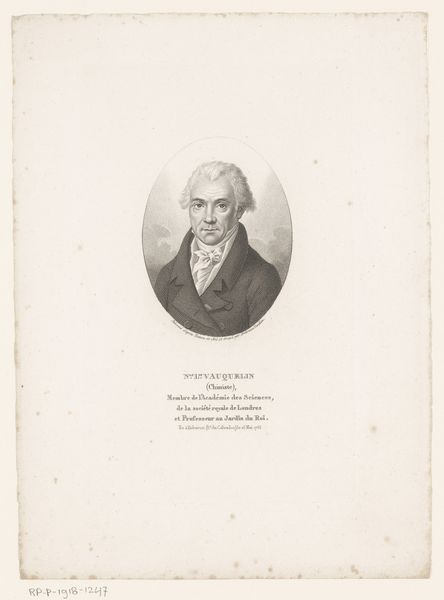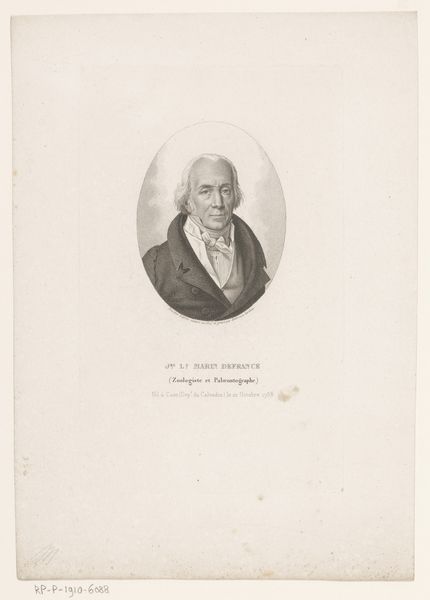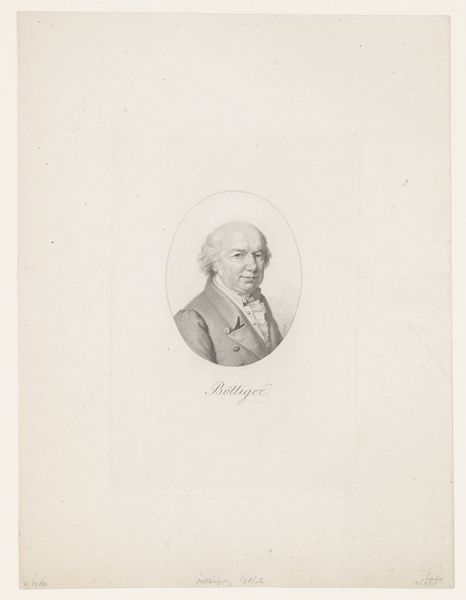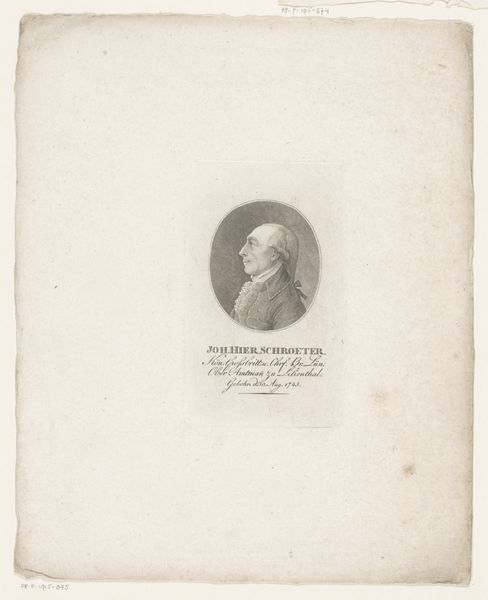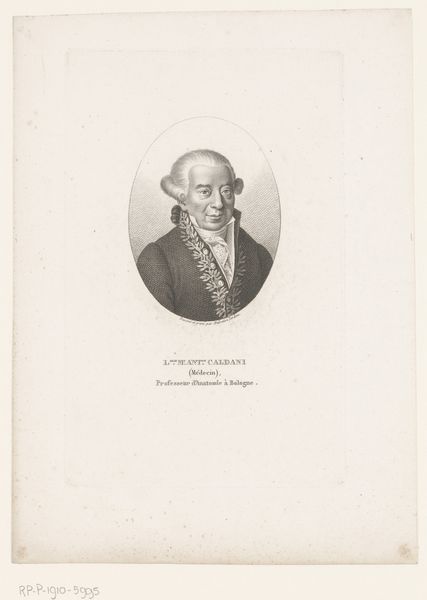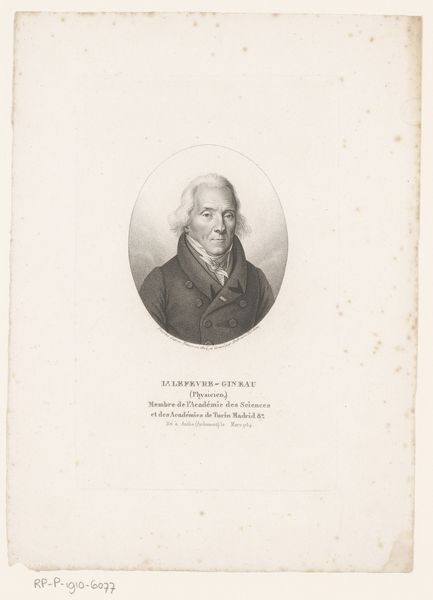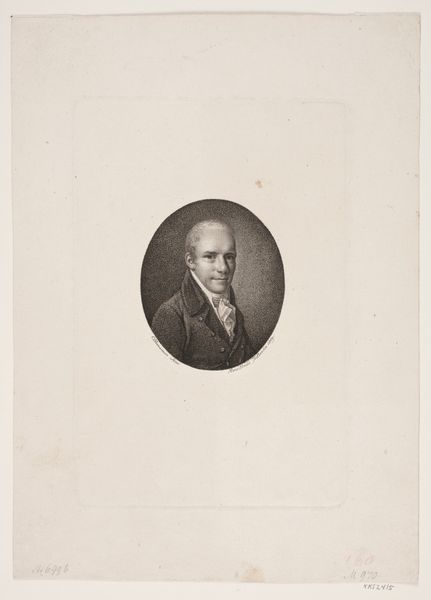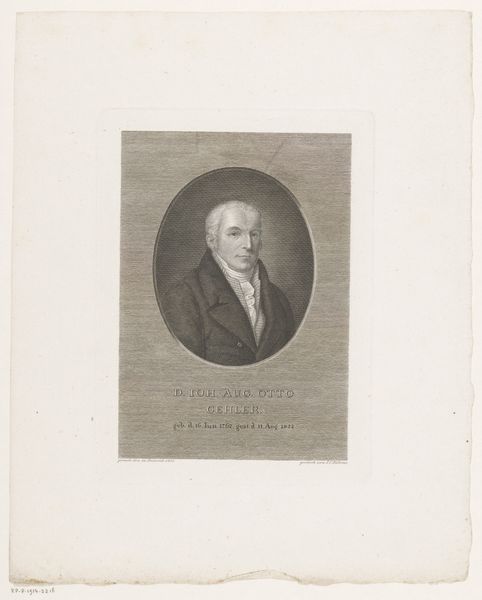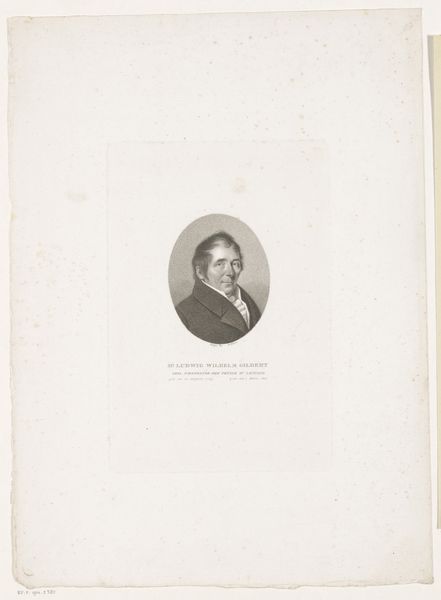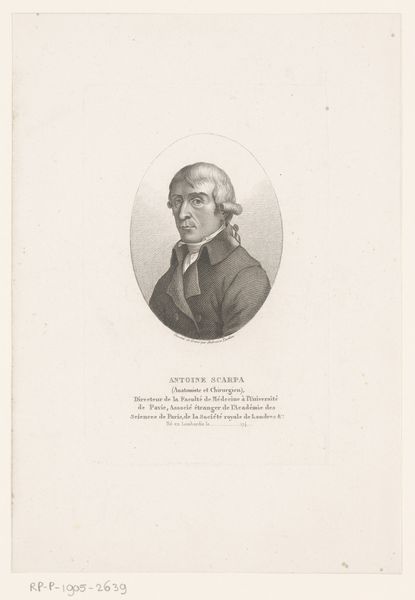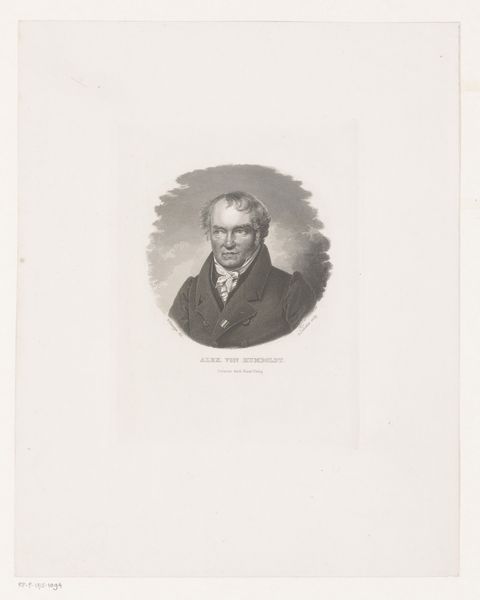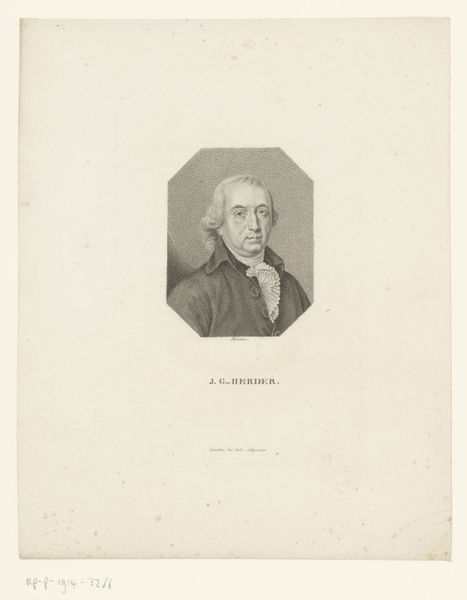
paper, engraving
#
portrait
#
neoclacissism
#
paper
#
engraving
Dimensions: height 229 mm, width 142 mm
Copyright: Rijks Museum: Open Domain
Curator: Here we have an engraving from between 1820 and 1828, attributed to Ambroise Tardieu. It’s a portrait of Barthélemy Faujas de Saint-Fond. Editor: Austere! That's the first word that comes to mind. The limited tonal range enhances a certain starkness, doesn’t it? Curator: It does. Portraits during the Neoclassical period were often like this: stoic and reserved. This reflects the subject's status and intellect. The oval frame contributes to the classicizing tendency. Faujas de Saint-Fond, after all, was a noted geologist, literally "Professor of Geology in the Garden of the King," as the inscription notes. Editor: Observe the composition. The face is carefully rendered, precise hatching throughout, while the body fades subtly, dematerializing towards the edge of the oval. It focuses our attention so specifically, making us read the face carefully. There's such fine gradations of tone. Curator: Yes, the engraving is meant to communicate authority, the symbolic power of reason, and the "Age of Enlightenment." These portraits reinforced notions of ideal, rational selves. Engravings such as this one served the purpose of making important personalities reproducible. Editor: Certainly the intent is to highlight intellect and gravity through pure representational form. But that face, those slightly downturned eyes…there's a hint of something…wistful? Curator: Perhaps that speaks to a recognition of human frailty even amidst grand ideals. Though these visual forms of the Enlightenment attempted to forge new types of selfhood. It may reveal the tensions involved in that project of forging identity. Editor: Or perhaps it's simply excellent artistry teasing out nuances despite a rigid style. Either way, it holds our attention. Curator: It does indeed. Thank you for sharing your insights. It’s a work that encapsulates its era with clarity and leaves lingering questions about self-representation. Editor: My pleasure. It reminds us that even the most meticulously planned works can harbor unforeseen complexities, which ultimately invites ongoing reinterpretation.
Comments
No comments
Be the first to comment and join the conversation on the ultimate creative platform.
